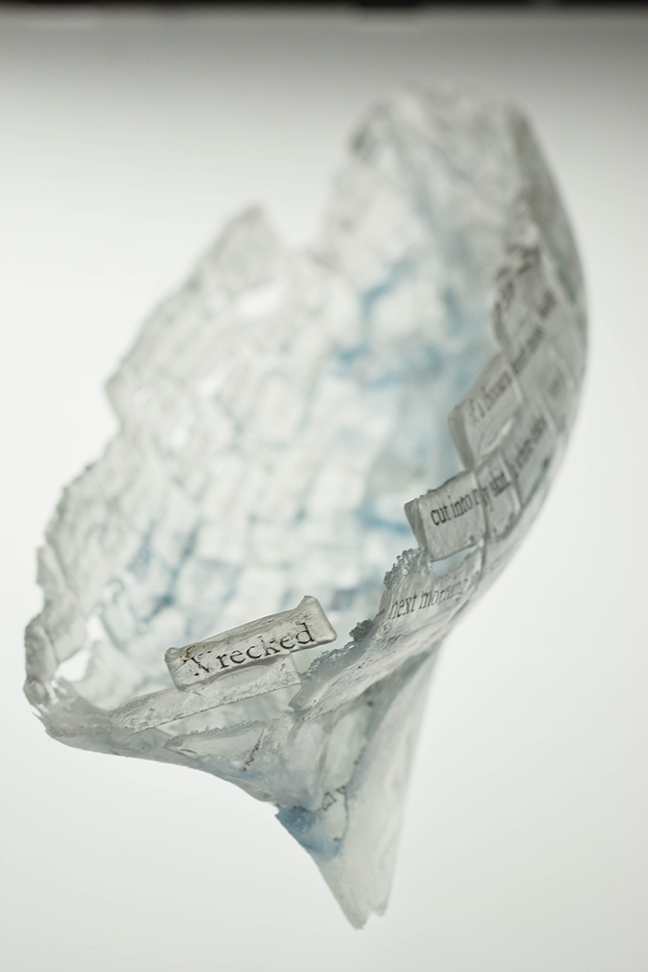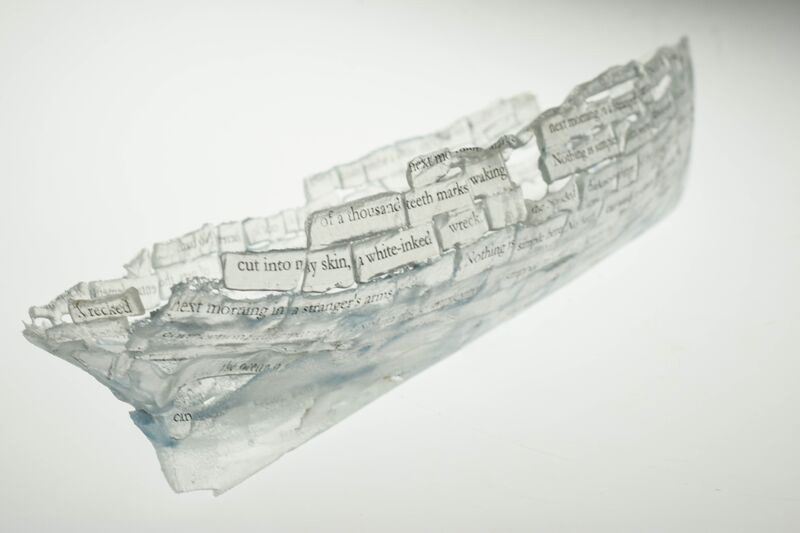Lately, my collaborator and I have been running into a challenge with our glass work-it’s not getting into some juried glass exhibitions. I asked a well-seasoned colleague why he thought this was the case and he told me the work was “too intelligent”, that it was “very sophisticated”. In the past I’ve had similar comments made about my artist’s books-they were “too opaque” and “too beautiful”.
After a few quick flashes of anger, befuddlement, and wondering if these comments were made to me because of my gender (who would tell Rothko that his work was “too beautiful”?), I decided to be fair and think about the comments. I concluded that the problem does not lie primarily in the work, but in the venues and exhibitions to which we were submitting our applications. There are challenges within the work that some jurors and traditionalists find daunting; the integration of text and sculptural object. To some sectors of the glass community the look of a shipwrecked boat with rough, unfinished edges is not what they tend to value and text as anything beside a surface treatment seems alien to that bailiwick. Fair, but also unfair. We need to seek the right audience for our work. That alone is work in itself.
The challenge of making new work that is different, both beautiful and deep, intelligent work that varies from the tradition, is not something an artist considers during the making; that is a goal addressed outside the studio during sketching, researching, and conceptual development. Consideration of placement for the work is part of the marketing process. The tasks outside the process of making inform those inside the studio and vice versa.
Could there be improvement to the sculptures’ compositions? Of course. Now that we’ve got a sense of how the process works, should we dive deeper into creating stronger structures and more clearly communicate a specific conceptual perspective? Of course! Is the work successful as it is? Absolutely, or we would not send it out into the world. It is beautiful and, as mentioned, intelligent and sophisticated. The work has been well received by a number of venues and respected jurors; the discomfort and questioning on our part came about because there were a few venues we were confident would accept the work and they didn’t. Ego is inevitably involved; the blow to our confidence was because of our conviction that this is very good, if not great work, and unique. A friend might tell us to simply focus on the successes. Contemporary artists always face the hurt of being rejected by a jury of one’s peers despite a true belief that the work is successful. This belief is not blind or naïve; it comes from years of making work and investing ourselves in our practice.
One thing I wonder about the work is whether or not the integration of text and image/object are considered a distraction by the jurors. We did not think of the boats as vessels for the text any more than we think of artist’s books as vessels for information. The medium and message are one and the same. Material and meaning become one. These considerations are information that we can take back to the studio and integrate into the making then come out of the place of making to try again, to see the work objectively, to find the appropriate venues, the desirably intelligent, sophisticated, and curious audience.
The gauntlet has been thrown down. We have to ask ourselves whether or not we are willing to simplify the work to appeal to a more traditional audience. Are we? Never.


